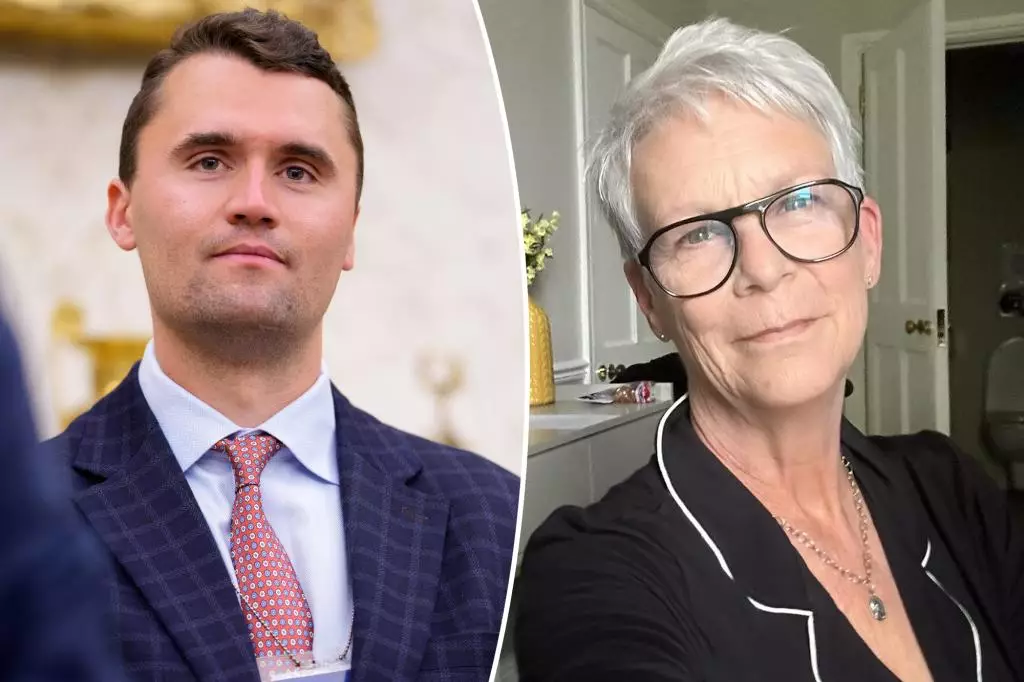In a world increasingly numb to violence and tragedy, Jamie Lee Curtis’s emotional response to the death of Charlie Kirk offers a profound reminder of the importance of human empathy, even towards those with whom we fundamentally disagree. Her vulnerability reveals that, despite ideological divides, recognizing the humanity in others remains a vital act of compassion. This moment serves as a stark contrast to our culture’s tendency to dismiss or dehumanize individuals involved in violence, urging us to reflect on the moral obligation to see beyond the political or ideological labels and acknowledge the intrinsic worth of every person.
Curtis’s open lamentation underscores a critical truth: human beings are complex entities shaped by faith, relationships, and shared experiences, none of which are erased by disagreement or offensive views. Her belief that Kirk’s faith persisted until his death highlights how even in moments of extremity, the potential for spiritual connection and hope persists. Her acknowledgment that she “disagreed with almost every point” but still recognized his humanity suggests a level of moral maturity that many in society could emulate. It encourages us to pause before rushing to judgment, remembering that compassion is the foundation of a more humane and understanding community.
The Illusion of Violence as Spectacle
Curtis’s critique of society’s bombardment with violent imagery presents a necessary challenge to how we process trauma in the digital age. The proliferation of violent videos—whether of shootings, terrorist acts, or political assassinations—creates a landscape where tragedy is consumed repeatedly, often without meaningful reflection. This overexposure risks numbing us, dulled senses that prevent genuine empathy from forming. Curtis warns us against the desensitization that occurs when violence becomes a familiar spectacle, eroding the emotional and psychological resilience necessary to respond compassionately.
She draws parallels to the historical trauma of events like 9/11, emphasizing how repeatedly witnessing such images can foster emotional fatigue and disconnection. The concern is not merely about viewing violence but about the long-term psychological impact—how these images embed themselves into our subconscious, shaping our perceptions of human suffering. Curtis’s stance invites us to reconsider our consumption habits, advocating for a more mindful engagement with traumatic content that honors the victims and preserves our capacity for empathy.
Understanding Violence: Psychological and Societal Implications
There is an urgent need to explore what repeated exposure to violence does to our collective psyche. Curtis hints that society has become “inured” to trauma, possibly as a coping mechanism in an age of constant information overload. Yet, this supposed resilience may come at a hidden cost: emotional numbness, increased cynicism, and a diminished sense of moral responsibility. The danger lies in accepting violence as an inevitable part of modern life, which could erode our capacity to act compassionately or seek meaningful change.
Furthermore, her reluctance to watch footage of Kirk’s assassination reveals an instinctual boundary—an attempt to protect her mental health from further harm. This resonates with the idea that each individual has limits to their emotional endurance. Recognizing and respecting those boundaries could be a step toward fostering healthier societal attitudes, where acknowledging pain does not mean becoming overwhelmed but rather managing it with conscious awareness and deliberate compassion.
The Morality of Justice and the Human Cost
The discussion surrounding the perpetrator, Tyler Robinson, and the subsequent calls for capital punishment, exposes a fraught debate about justice, mercy, and the weight of violence. Curtis’s focus on the humanity of Kirk—despite her disagreement with his views—suggests that our response to violent acts should extend beyond legal retribution. It is about grappling with the profound moral questions: how do we balance justice with compassion? Can we find room for forgiveness and understanding even in the face of brutal violence?
Curtis’s refusal to indulge in watching Kirk’s death reflects a broader ethical stance—distancing oneself from the spectacle of violence and instead acknowledging the tragic loss of life as a human tragedy that transcends political or ideological boundaries. Her perspective challenges a culture fixated on punitive measures, urging us instead to seek a more empathetic, healing approach that recognizes the deep emotional and spiritual scars carried by victims, their families, and communities.
A Call for Thoughtful Engagement in a Divided Society
Ultimately, Jamie Lee Curtis’s emotional insight serves as a clarion call to foster genuine empathy amid our polarized landscape. It reminds us that beneath every headline, every viral video, and every ideological battle, there are human stories that demand compassion, reflection, and understanding. Her vulnerability demonstrates that true strength lies in our ability to mourn with those we disagree with—acknowledging pain and death not as political tools but as profound human experiences.
As societal debates intensify over violence, justice, and morality, her stance invites a rare humility. It encourages us to look inward, question our emotional responses, and choose compassion over condemnation. Moving forward, cultivating this capacity for empathy—even toward those we find abhorrent—may be the most powerful act we can undertake to heal fractured communities and restore our collective humanity.

Leave a Reply